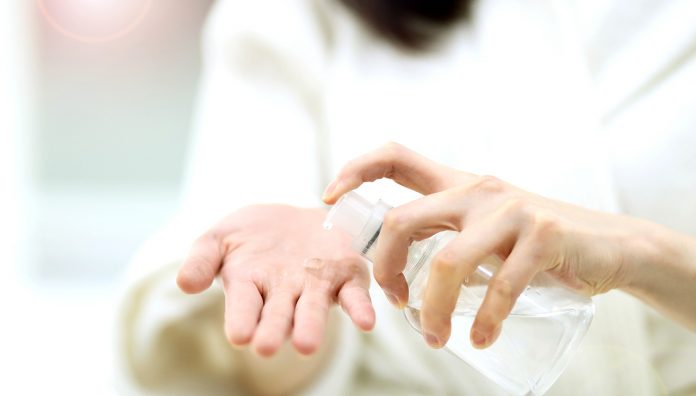What infection control measures should pharmacists take to protect themselves, patients and staff against infectious diseases, such as COVID-19?
Pharmacists are regularly at risk of exposure to infections, from the common cold to influenza to new and emerging infectious diseases such as the recent novel coronavirus. We are often the first port of call for patients seeking advice, symptom relief and reassurance. This is a privilege. However, it is also important that pharmacists help limit the spread of infection and protect themselves, other staff members and the Australian community.
Standard infection control precautions
Standard infection control procedures and precautions should be practiced at all times. The 5 moments for hand hygiene aims to minimise infection transmission between a healthcare professional, patient, and their surroundings. Healthcare professionals should clean their hands in the following situations4:
- Before touching a patient (e.g. shaking hands).
- Before a procedure (e.g. immunisation, wound dressings).
- After a procedure or a risk of being exposed to bodily fluids.
- After touching a patient.
- After touching a patient’s surroundings (e.g. personal belongings, the dispensary counter).
Performing hand hygiene correctly (through using an alcohol-based handrub containing 60–80% v/v ethanol or equivalent5 and washing hands with soap and water) is important to minimise the spread of infection.
Hand Hygiene Australia has several useful resources (www.hha.org.au/), including posters. Pharmacists and their staff can also improve infection prevention and control practices by6:
- educating patients about hand hygiene benefits in preventing and controlling infection
- cleaning surfaces (e.g. benches) regularly
- cleaning clinical equipment after each patient use.
Enhanced infection control precautions
In certain situations, additional infection control precautions may be advised by government agencies. It is important that pharmacists remain up-to-date with current recommendations and advice in the event of infection outbreaks and implement recommended strategies. This may include use of personal protective equipment such as face masks or other workplace changes, such as isolation.
The novel coronavirus?
Reports of an outbreak in Wuhan, China, of a novel coronavirus, now named COVID-19, emerged officially on 31 December 2019 and cases have since been confirmed in Australia.8,9 The Department of Health has provided guidance to primary and community health workers for managing patients presenting with COVID-19 symptoms.10 Further information can be found on websites of:
- Department of Health
- State health departments
- International Pharmaceutical Federation (FIP).
References
- Pharmaceutical Society of Australia. Professional Practice Standards, Version 5. Canberra: PSA; 2017. At: www.psa.org.au/wp-content/uploads/2018/08/Professional-Practice-Standards-v5.pdf
- American Society of Health-System Pharmacists. ASHP statement on the pharmacist’s role in antimicrobial stewardship and infection prevention and control. Am J Health Syst Pharm 2010;67(7):575–7. At: www.ashp.org/-/media/assets/policy-guidelines/docs/statements/pharmacists-role-antimicrobial-stewardship.ashx
- Australian Commission on Safety and Quality in Health Care. Antimicrobial stewardship in Australian health care 2018. Sydney: ACSQHC; 2018. At: www.safetyandquality.gov.au/our-work/antimicrobial-stewardship/antimicrobial-stewardship-australian-health-care-2018
- World Health Organization. Clean care is safer care. 2020. At: www.who.int/gpsc/5may/background/5moments/en/
- Australian Commission on Safety and Quality in Health Care. Alcohol-based handrubs. 2019. At: www.safetyandquality.gov.au/our-work/infection-prevention-and-control/national-hand-hygiene-initiative-nhhi/what-hand-hygiene/alcohol-based-handrubs
- National Health and Medical Research Council, Australian Commission on Safety and Quality in Health Care. Australian guidelines for the prevention and control of infection in healthcare. Canberra: National Health and Medical Research Council; 2019. At: www.nhmrc.gov.au/about-us/publications/australian-guidelines-prevention-and-control-infection-healthcare-2019
- Better Health Channel. Workplace safety – infection control. 2018. At: www.betterhealth.vic.gov.au/health/conditionsandtreatments/workplace-safety-infection-control
- World Health Organization. Novel coronavirus (2019-nCoV). 2020. At: www.who.int/emergencies/diseases/novel-coronavirus-2019
- Australian Government Department of Health. Coronavirus update at a glance. 2020. At: www.health.gov.au/news/coronavirus-update-at-a-glance
- Australian Government Department of Health. Information for primary and community health workers. 2020. At: www.health.gov.au/sites/default/files/documents/2020/02/novel-coronavirus-2019-ncov-information-for-primary-and-community-health-workers-novel-coronavirus-2019-ncov-information-sheet-for-primary-and-community-health-workers.pdf
NAOMI WEIER BPharm (Hons), GradCert PharmPract, MClin- Pharm, CertIV TAE, AACPA, MPS is a Project Pharmacist at PSA and PhD Candidate. She has experience working in community pharmacy, private hospitals, and in undertaking Home Medicines Reviews.
HELP US HELP YOUProfessionals learn and develop from the experience of their peers. AP welcomes member contributions of practice advice as well as questions to be answered in this column. Advice contributions may be about ethical dilemmas, pearls of wisdom or integrating new roles or technology into practice. Responses should be between 250–500 words, and may be edited for space, legal, accuracy or privacy purposes. Lodge your questions or advice at editorial@australianpharmacist.com.au |




 ‘We’re increasingly seeing incidents where alert fatigue has been identified as a contributing factor. It’s not that there wasn’t an alert in place, but that it was lost among the other alerts the clinician saw,’ Prof Baysari says.
‘We’re increasingly seeing incidents where alert fatigue has been identified as a contributing factor. It’s not that there wasn’t an alert in place, but that it was lost among the other alerts the clinician saw,’ Prof Baysari says.


 Beyond the arrhythmia, AF often signals broader pathological processes that impair cardiac function and reduce quality of life and life expectancy.5 Many of these conditions are closely linked to social determinants of health, disproportionately affecting populations with socioeconomic disadvantage. Effective AF management requires addressing both the arrhythmia and its underlying contributors.4
Beyond the arrhythmia, AF often signals broader pathological processes that impair cardiac function and reduce quality of life and life expectancy.5 Many of these conditions are closely linked to social determinants of health, disproportionately affecting populations with socioeconomic disadvantage. Effective AF management requires addressing both the arrhythmia and its underlying contributors.4  C – Comorbidity and risk factor management
C – Comorbidity and risk factor management Warfarin
Warfarin







